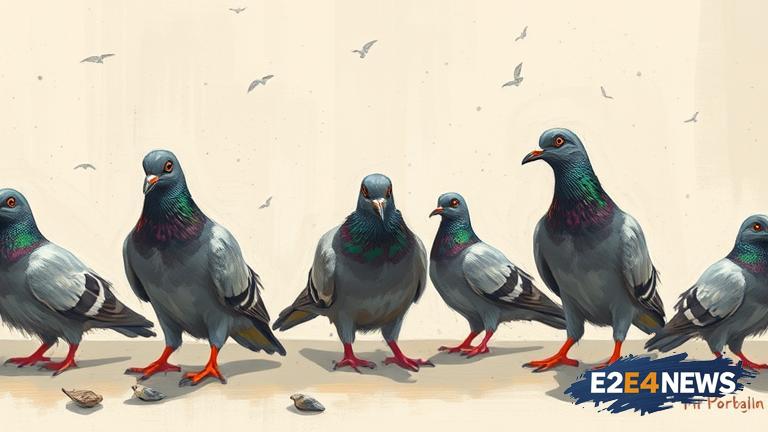The BMC’s decision to introduce cats to control the pigeon population in Mumbai has been met with skepticism by many experts and residents. While the idea may seem innovative, it raises several concerns about the feasibility and potential consequences of such a plan. For instance, the BMC has not provided any concrete evidence to support the claim that cats can effectively control the pigeon population. Moreover, the city’s pigeon problem is a complex issue that requires a multi-faceted approach, involving measures such as waste management, public awareness campaigns, and habitat modification. The introduction of cats may not address the root causes of the problem and could potentially create new issues, such as the spread of diseases and the disruption of the local ecosystem. Furthermore, the BMC’s plan has been criticized for being poorly thought out, with many questioning the logistics of implementing such a program. The city’s residents have also expressed concerns about the potential risks associated with introducing a large number of cats into the environment, including the possibility of cat bites and scratches. In addition, the BMC’s plan has been accused of being a knee-jerk reaction to the pigeon problem, rather than a well-researched and carefully considered solution. The city’s pigeon population is estimated to be in the millions, and it is unclear how the introduction of a few hundred cats would make a significant impact. The BMC has also not provided any information on how the cats would be cared for, including their feeding, vaccination, and sterilization. The lack of transparency and accountability in the BMC’s plan has led to widespread criticism and skepticism. Many experts have suggested that the BMC should focus on more effective and sustainable solutions, such as improving waste management and public awareness campaigns. The city’s residents have also called for a more comprehensive approach to addressing the pigeon problem, including the involvement of local communities and stakeholders. The BMC’s plan has also been criticized for being a waste of public funds, with many questioning the allocation of resources for such a program. The city’s budget for the cat population control initiative has not been disclosed, but it is likely to be a significant amount. The BMC’s plan has also been accused of being a distraction from more pressing issues, such as the city’s infrastructure and public health problems. The city’s residents have expressed frustration and disappointment with the BMC’s lack of effective solutions to the pigeon problem. The BMC’s plan has also been criticized for being a short-term fix, rather than a long-term solution. The city’s pigeon population is a complex issue that requires a sustained and multi-faceted approach, involving the collaboration of multiple stakeholders and the allocation of significant resources. The BMC’s plan has also been accused of being a failure of governance, with many questioning the accountability and transparency of the municipal corporation. The city’s residents have called for a more effective and sustainable solution to the pigeon problem, including the implementation of a comprehensive waste management system and public awareness campaigns. The BMC’s plan has also been criticized for being a threat to the city’s biodiversity, with many questioning the potential impact of introducing a large number of cats into the environment. The city’s ecosystem is already under significant pressure, and the introduction of cats could potentially disrupt the delicate balance of the local wildlife. The BMC’s plan has also been accused of being a failure of imagination, with many questioning the lack of creativity and innovation in the municipal corporation’s approach to addressing the pigeon problem. The city’s residents have called for a more innovative and effective solution, including the use of technology and community-led initiatives.





